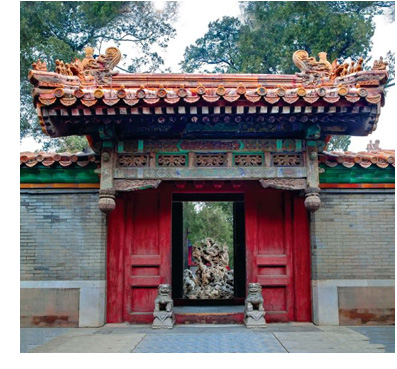Forbidden City's Treasures Go on View
at Met Museum
 NEW YORK -- The Forbidden City's Treasures will go on view at the Metropolitan Museum of Art in New York City on February 1, 2011.
NEW YORK -- The Forbidden City's Treasures will go on view at the Metropolitan Museum of Art in New York City on February 1, 2011.
This international loan exhibition features 90 exquisite objects that once adorned an exclusive compound in the Forbidden City, China -- almost all of the objects have never before been seen publicly.
Showcasing sumptuous murals, furniture, architectural elements, Buddhist icons, and decorative arts, the exhibition presents works of art that demonstrate the highest levels of artistic accomplishment in 18th-century China. An imposing portrait of the Qianlong Emperor, a radiant silk panel depicting a Buddhist shrine, magnificent thrones executed with impeccable craftsmanship, and a monumental jade-and-lacquer screen consisting of 16 panels are among the works on view.
Augmenting the objects will be photo murals of the Qianlong Garden as well as a video-simulated "walk-through" of the Studio of Exhaustion from Diligent Service (Juanqinzhai), the first building to be fully restored there.
The exhibition was organized by the Peabody Essex Museum in partnership with the Palace Museum and in cooperation with World Monuments Fund and has been made possible through generous support from the Mandarin Oriental Hotel Group and American Express. Additional support was provided by the E. Rhodes and Leona B. Carpenter Foundation, The Freeman Foundation, the National Endowment for the Arts, and ECHO (Education through Cultural & Historical Organizations).
The Qianlong emperor (pronounced "chien-lung") was the fourth monarch of the Qing dynasty (1644-1911) who reigned from 1736 to 1795. Built between 1771 and 1776, the Qianlong Garden was for the emperor's intended retirement and no expense was spared, as the finest artisans used the highest quality materials to create intricately embellished interior and exterior spaces. But the emperor never retired and the garden—relatively untouched since imperial times—remains a virtual time capsule of 18th-century taste at its most extravagant.
Installed in the Metropolitan's Galleries for Chinese Painting and Calligraphy, which surround a Ming-style garden court and a hall with outstanding examples of Chinese hardwood furniture, the exhibition will lead viewers through a series of thematic galleries, much as the actual garden was intended to lead visitors through a series of courtyards. These courtyards contained evocatively named halls and pavilions devoted to discrete themes, such as theatrical performances and trompe l'oeil illusions, Buddhist worship or meditation, the "three friends" of wintry weather (pine, plum, and bamboo), and exotic foreign environments and furnishings. Nearly every space featured a throne—each different in its design and materials—as demonstrated through the several examples in the exhibition.
Complementing The Emperor's Private Paradise will be two installations drawn from the Metropolitan's holdings of Qing court art. Extravagant Display: Chinese Art in the 18th and 19th Centuries—a rich selection of theatrical costumes, lacquers, ivories, jades, porcelains, metalwork, and other media largely created for use within the imperial precincts—will be presented in the Florence and Herbert Irving Galleries for Chinese Decorative Arts (December 14, 2010 through May 1, 2011). Also, imperially commissioned paintings and calligraphies from the Qianlong era will be on display in an installation in The Frances Young Tang Gallery.
Published January 28, 2011

